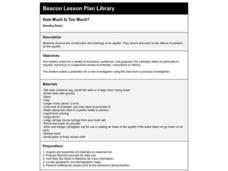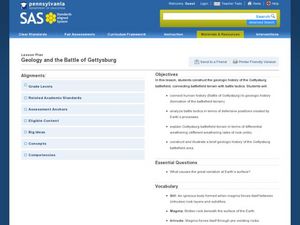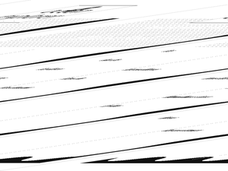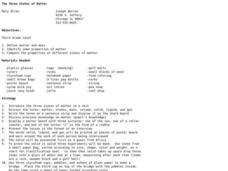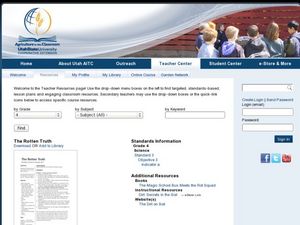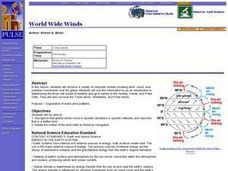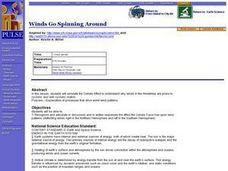Curated OER
HOW MUCH IS TOO MUCH?
Students observe the construction and workings of an aquifer. They record and react to the effects of pollution on the aquifer.
Curated OER
Geology and the Battle of Gettysburg
Learners create geologic maps of the Gettysburg battlefield. In this geologic skills lesson, students consider the variations of Earth's surfaces and explore strategies employed by the North and South in the Battle of Gettysburg to...
Curated OER
What is a Karst
Students investigate landforms by holding a class experiment. In this topography lesson, students define the word "karst" and discover why sinkholes are created on the surface of the Earth by completing worksheets. Students create a...
Curated OER
Earthquake!
Students gain an understanding of earthquakes. They examine vocabulary associated with earthquakes, how earthquakes happen, and preventive measures taken to diminish damage or harm in the event that an earthquake should happen.
Curated OER
Comets And Meteor Showers
Young scholars fill in a diagram of a comet. They listen to a short lecture, view flash animation descriptions of comets and meteors and then use the presented information to complete a worksheet.
Curated OER
Bathymetry
Students study the topography of the ocean floor and the geological processes of how it is formed. They summarize what bathymetry, describe how islands are formed and illustrate a bathymetric model of the sea floor.
Curated OER
The Three States of Matter
Third graders identify properties of solids, liquids, and gasses. In this states of matter instructional activity, the teacher demonstrates the properties of each state of matter, then students go on a scavenger hunt for items to...
Curated OER
My Time
Students create a timeline of their lives. In this timeline activity, students discuss relative and absolute time. They use events in their lives to create categories on a timeline. They link this activity to geologic timelines.
Curated OER
Soil Profile
Fourth graders research soil layers and create a soil profile in a jar. In this soil profile lesson, 4th graders working in groups, research a given layer of soil, make a 3-5 minute presentation to the class, and complete a worksheet. ...
Curated OER
Soil Management
Fourth graders examine different opinions on soil management. In this soil management lesson, 4th graders use a variety of resources to research how agriculture and the environment are related. They investigate cause and effect...
Curated OER
Case of the Missing Pumpkin
Fourth graders explore holidays by participating in a pumpkin activity. In this vegetation lesson, 4th graders discuss the different uses for pumpkins, not just Halloween decorations. Students identify the nutrients pumpkins need to...
Curated OER
The Rotten Truth
Fourth graders investigate compost. In this Science lesson, 4th graders take notes on the components of soil and its relation to plant growth. Students describe the steps in making compost.
Curated OER
Vermicomposting
Fourth graders explore insect life by viewing a soil presentation in class. In this composting lesson, 4th graders read assigned text about the process of composting soil and the necessity of soil in plant life. Students view video clips...
Curated OER
Working Worms
Fourth graders examine earthworms. In this earthworm lesson, 4th graders investigate how earthworms help prepare soil for planting. Students examine other living and nonliving elements in a garden habitat.
Curated OER
How Does Your Magma Grow?
Students identify the three types of plate boundaries and the Earth's tectonic plates system. They examine how the Galapagos Islands were formed and hydrothermal vents.
Curated OER
Avalanche!
Students build a model representing a snow-covered mountain out of flour, sugar, and potato flakes. Then they use the model to recreate an avalanche.
Curated OER
What's the Matter? Where Did it Go?
Eighth graders analyze questions posted on a large poster in the room and work in groups to record their response to the question on paper, rotating to the next question after two minutes have passed. They review the characteristics of...
Curated OER
WS 8.9 Presentation Questions
In this mixtures worksheet, learners answer twenty three questions about student presentations on topics such as amalgams, homogenized milk, antifreeze and coolants, soaps and detergents and water softeners.
Curated OER
The Chemistry Connection
In this proteins worksheet, students read about the chemical compound, protein. Students determine where proteins are found in the body and how enzymes help the body react. Then students complete 3 short answer questions.
Curated OER
Getting the "Yuck" Out
Young scholars examine various types of household materials for their usefulness as filters. They work together in teams to design a filtration system that produces the cleanest water in the shortest time.
Curated OER
Plate Tectonic - Volcanoes (K)
Students observe how lava flows from a volcano by watching the teacher create a mini volcano with shaving cream.
Curated OER
Atmospheric Cells
Learners recognize that the sun is the source of energy driving atmosphere cells. They relate the motion of the atmospheric cells to mantle convection cells. Students recognize that the function of atmospheric cells is to move heat from...
Curated OER
World Wide Winds
Students recognize that global winds move in specific directions in specific latitudes and describe that in a written form. They relate the motion of the wind belts to historical navigation.
Curated OER
Winds Go Spinning Around
Students simulate the Coriolis Effect to comprehend why winds in the Westerlies are prone to cyclonic and anti-cyclonic motion. They arrive at an explanation of processes that drive world wind patterns
Other popular searches
- Sedimentary Rock Formation
- Metamorphic Rock Formation
- Rock Formation Caves
- Igneous Rock Formation
- Formation of Metamorphic Rock
- River Rock Formation
- El Captain Rock Formation
- Famous Rock Formations
- Rock Formation Petra
- Conglomerate Rock Formation
- Rock Formations Anticline
- Formation of Rock Types


